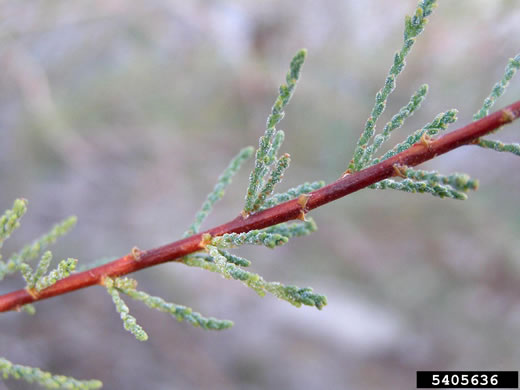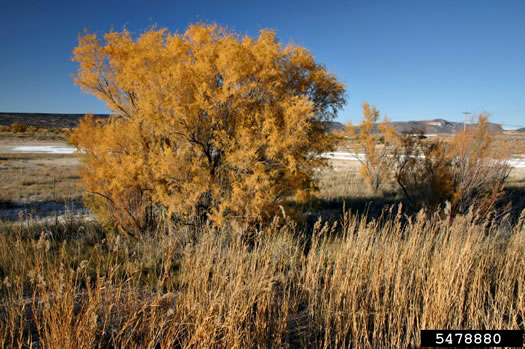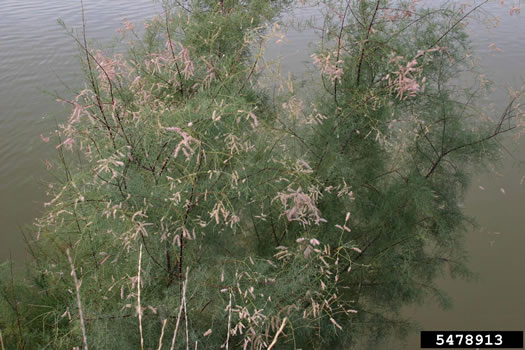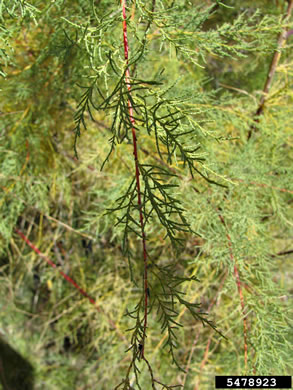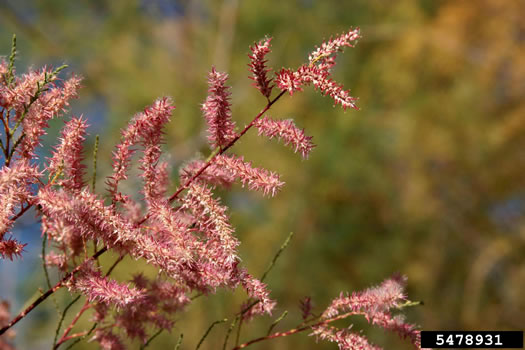Spermatophytes (seed plants): Angiosperms (flowering plants): Eudicots: Core Eudicots: Caryophyllales
WEAKLEY'S FLORA OF THE SOUTHEASTERN US (4/24/22):
Tamarix ramosissima
FAMILY
Tamaricaceae
Go to FSUS key
Dig deeper at SERNEC, a consortium of southeastern herbaria.
Check out EDDMapS.org to see where this has been reported.
See more pictures at www.invasive.org.
Read more about Tamarix at Vascular Plants of North Carolina.
SYNONYMOUS WITH
PLANTS NATIONAL DATABASE:
Tamarix ramosissima
FAMILY
Tamaricaceae
SYNONYMOUS WITH Flora of North America
Tamarix ramosissima
SYNONYMOUS WITH Floristic Synthesis of North America. BONAP (Kartesz, 2015)
Tamarix ramosissima
INCLUDED WITHIN VASCULAR FLORA OF THE CAROLINAS (Radford, Ahles, & Bell, 1968) 128-01-001?:
Tamarix gallica FAMILY Tamaricaceae
INCLUDED WITHIN Manual of the Southeastern Flora (Small, 1933, 1938)
Tamarix gallica
COMMON NAME:
Salt-cedar, Tamarisk
To see larger pictures, click or hover over the thumbnails.
Bonnie Million, National Park Service, Bugwood.org bug_5405636
Month Unknown
Young bark is smooth and reddish-brown, maturing to dark brown to purplish, per Invasive Plants, Guide to Identification, Impacts and Control (Kaufman & Kaufman, 2007).
Leslie J. Mehrhoff, University of Connecticut, Bugwood.org bug_5478880
Month Unknown
Long taproots can seek scarce moisture and can also tolerate submersion, per Invasive Plants, Guide to Identification, Impacts and Control (Kaufman & Kaufman, 2007).
Leslie J. Mehrhoff, University of Connecticut, Bugwood.org bug_5478913
Month Unknown
Salt cedars have a spreading multi-trunked form and a feathery appearance, per Invasive Plants, Guide to Identification, Impacts and Control (Kaufman & Kaufman, 2007).
Leslie J. Mehrhoff, University of Connecticut, Bugwood.org bug_5478923
Month Unknown
The salt cedars bear tiny, overlapping scalelike leaves about 1/16" long, per Invasive Plants, Guide to Identification, Impacts and Control (Kaufman & Kaufman, 2007).
Leslie J. Mehrhoff, University of Connecticut, Bugwood.org bug_5478931
Month Unknown
Flowers cluster tightly at the tips of branches, per Invasive Plants, Guide to Identification, Impacts and Control (Kaufman & Kaufman, 2007).
WEAKLEY'S FLORA OF THE SOUTHEASTERN US (4/24/22):
Tamarix ramosissima
FAMILY
Tamaricaceae
SYNONYMOUS WITH
PLANTS NATIONAL DATABASE:
Tamarix ramosissima
FAMILY
Tamaricaceae
SYNONYMOUS WITH
Flora of North America
Tamarix ramosissima
SYNONYMOUS WITH
Floristic Synthesis of North America. BONAP (Kartesz, 2015)
Tamarix ramosissima
INCLUDED WITHIN
VASCULAR FLORA OF THE CAROLINAS (Radford, Ahles, & Bell, 1968) 128-01-001?:
Tamarix gallica
FAMILY
Tamaricaceae
INCLUDED WITHIN
Manual of the Southeastern Flora (Small, 1933, 1938)
Tamarix gallica
If a search such as "Carex leptalea var. leptalea" doesn't deliver the results you want, try "Carex leptalea".
Or, to minimize chances of a misspelling, try just "Carex le".
Less is more: If "pencil flower" doesn't deliver the results you want, try "pencil".

